33 Outcome 2: Trade Specific PPE
Outcome/Competency: You will be able to use Trade Specific PPE.
Timing: 1h15m
Rationale:
Why is it important for you to learn this skill?
It is important to be able to identify PPE required for safely working in the powerline trade because the correct PPE can help prevent workplace injuries and deaths.
Objectives:
To be competent in this area, the individual must be able to:
- Identify Personal Protective Equipment (PPE) required for work in the Powerline trade
Learning Goals
- Identify PPE pertinent to work sites and situations encountered by PLT’s
Introduction:
This section will cover the proper use and standards for hardhats, safety glasses, fire-retardant high-visibility clothing, rubber gloves, leather gloves, and work boots. It will culminate with a quiz to confirm understanding.
Instructions
- Cover the following content in each topic as a group (either reading out loud or independently) then give an opportunity to answer any questions.
- Have students do the review questions independently, then take up answers.
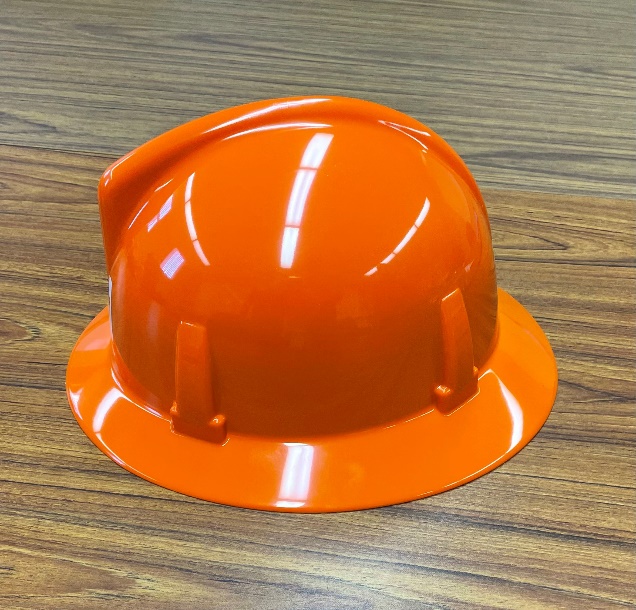 Topic: Hardhats (10m)
Topic: Hardhats (10m)
- Hard hats are to be worn at all times in designated areas.
- Hard hat suspension liners must have 1-1/4 inch clearance to the shell.
- Hard hats have an expiration date. Consult manufacturer’s specifications.
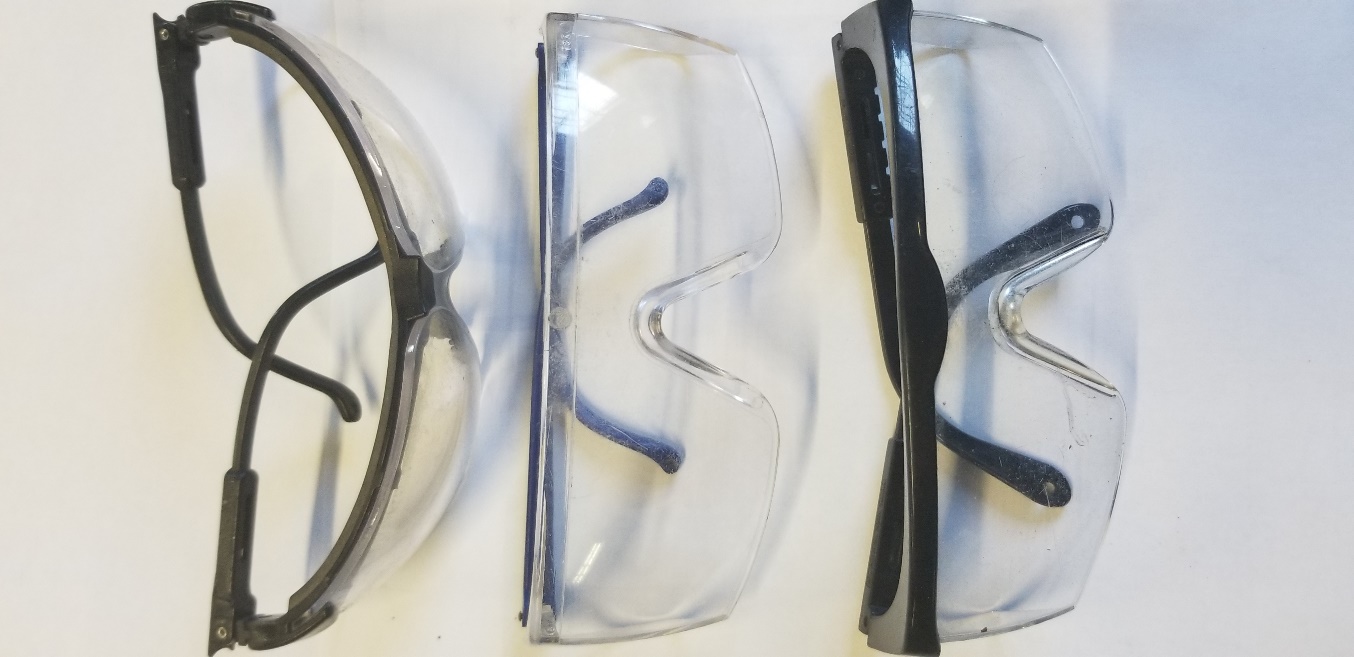 Figure SEQ Figure \* ARABIC 1 DJSparky, CC BY-SA 4.0 <https://creativecommons.org/licenses/by-sa/4.0>, via Wikimedia Commons
Figure SEQ Figure \* ARABIC 1 DJSparky, CC BY-SA 4.0 <https://creativecommons.org/licenses/by-sa/4.0>, via Wikimedia Commons
Topic: Safety Glasses (10m)
- Must be CSA (Canadian Standards Association) approved.
- Must have side shields.
- Appropriate lens tint for lighting conditions.
- Can be prescription.
- Good practice to wear throughout the day and must be worn when working.
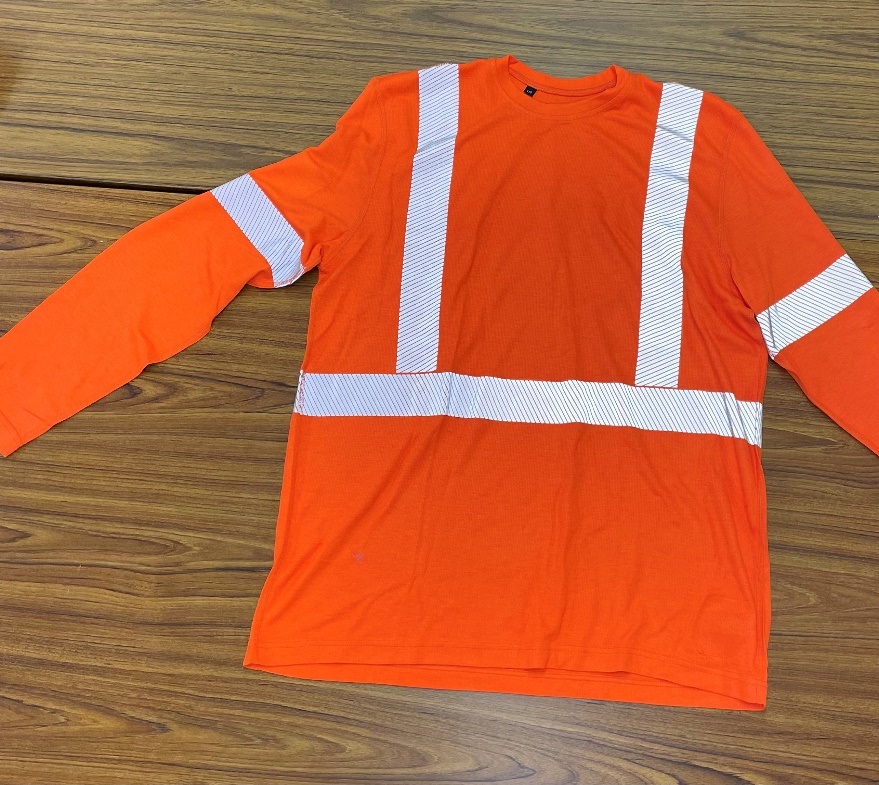 Topic: Fire Retardant High Visibility Clothing (10m)
Topic: Fire Retardant High Visibility Clothing (10m)
- Must be a minimum of class 2. (The class indicates how much heat energy the clothing can withstand before it burns.)
- Must have a minimum of class 2 visibility (moderate body coverage and superior visibility).
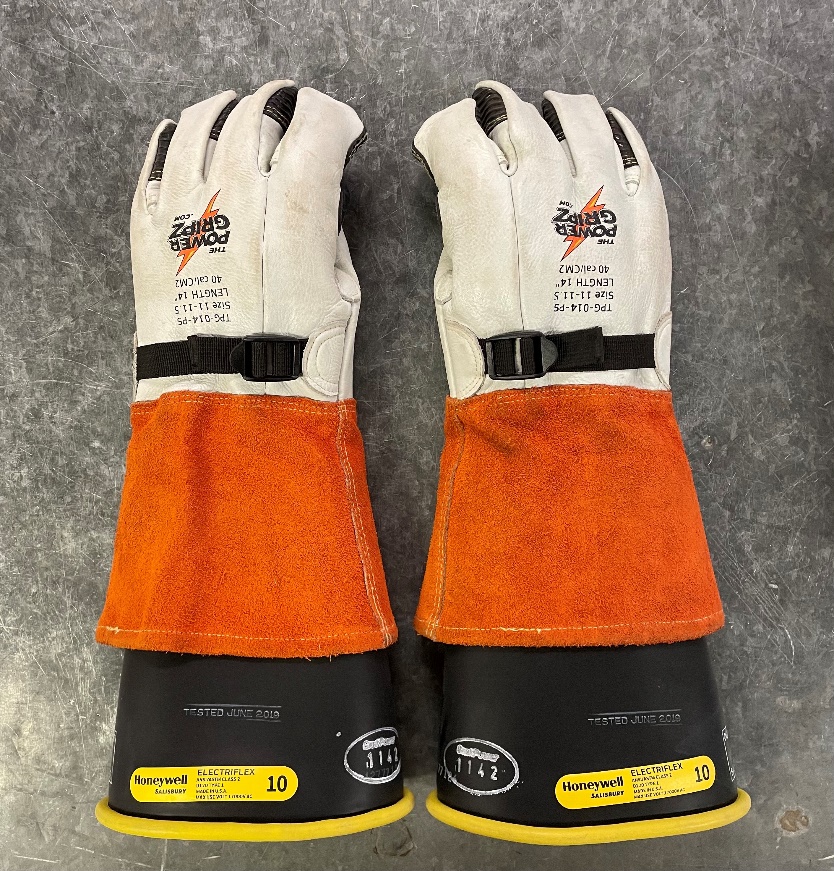 Figure SEQ Figure \* ARABIC 2 Rubber Gloves
Figure SEQ Figure \* ARABIC 2 Rubber Gloves
Topic: Rubber Gloves (10m)
Before each use, rubber gloves must be inspected for tears and cracks, and ensure test dates are current. Rubber gloves must be stored properly (in a bag with cuffs down.)
Rubber gloves must be worn when:
- Operating GOPT switches.
- Opening, closing, and locking padmounted transformers (lock to lock).
- Working in energized secondary pedestals.
- Stringing near live circuits.
Cut-outs are never to be closed with rubber gloves since there is a potential for “flash” and injury.
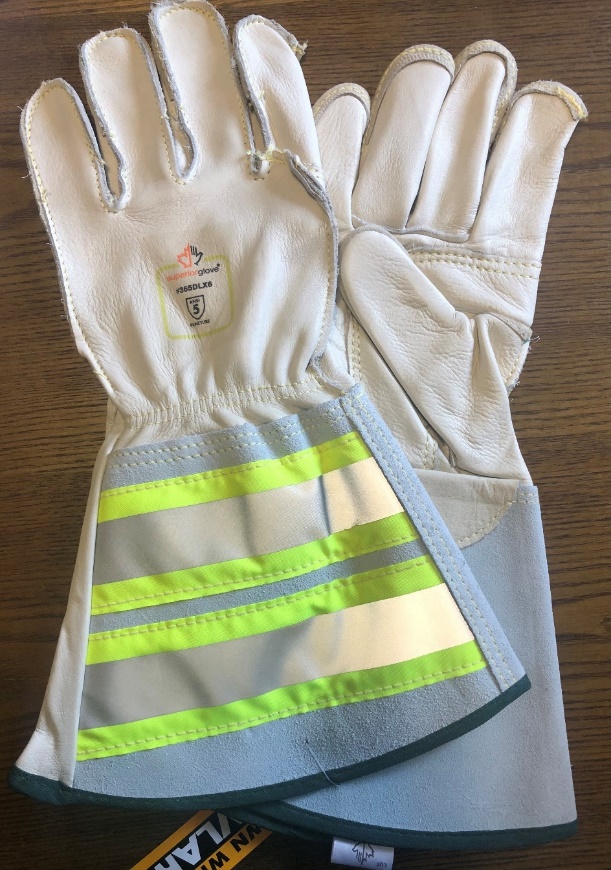 Figure SEQ Figure \* ARABIC 3 Leather gloves
Figure SEQ Figure \* ARABIC 3 Leather gloves
Topic: Leather Gloves (10m)
Leather gloves with cuffs offer optimum protection for hands and forearms while working and climbing.
Topic: Work Boots (10m)
Must be CSA approved
Must have steel or composite toe and must be dielectrically rated (resistant to electricity.)
The Orange OHM symbol indicates rated dielectrically, the green triangle indicates CSA approved
.
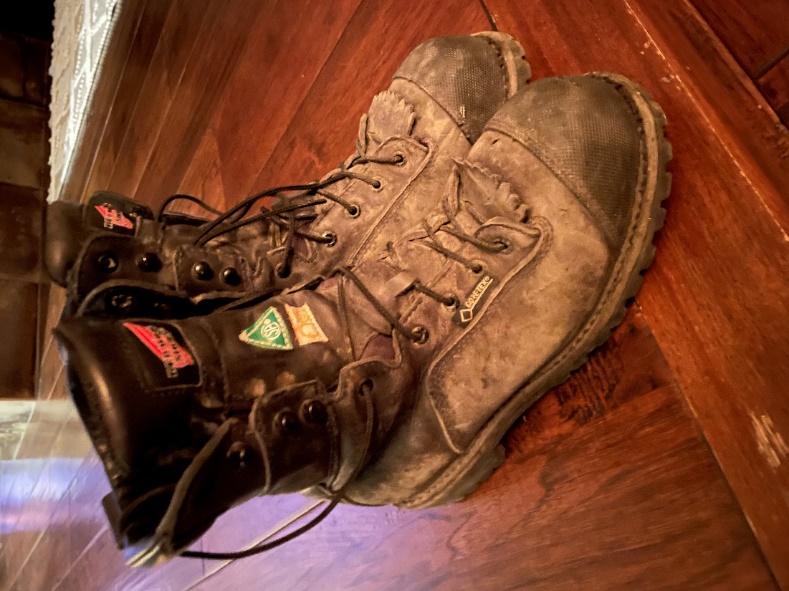 Figure SEQ Figure \* ARABIC 4 Typical style work boots.
Figure SEQ Figure \* ARABIC 4 Typical style work boots.
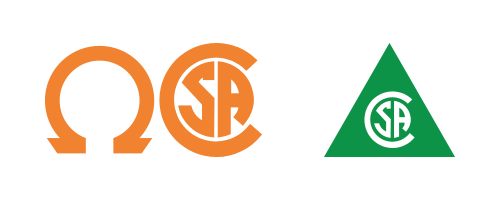 Figure SEQ Figure \* ARABIC 5 Certified work boots must display these symbols
Figure SEQ Figure \* ARABIC 5 Certified work boots must display these symbols
Review Exercises: Trade Specific PPE (15m)
- (T /F ) Hard hat suspension liners must have 1-3/4 inch clearance to the shell.
- (T / F) Safety glasses must have side shields.
- (T / F) Fire retardant clothing must be a minimum of class 3.
- (T / F) Before each use, rubber gloves must be inspected for tears and cracks, and ensure test dates are current.
- (T / F) Cut-outs are never to be closed with rubber gloves since there is a potential for “flash” and injury.
- (T / F) Work boots must be CSA approved.
Answer Key
1.F, 2.T, 3.F, 4.T , 5.T, 6.T
